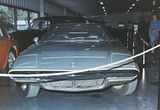The Torana with the greatest reputation is, unfortunately, one that did not make it into production. Designed during the LC development, but most likely to be released alongside the new LJ models, the GTR-X used a sleek wedge-shaped body running XU-1 components under a fibreglass skin. While the develpment plan called for the use of Holden's 186S engine, many believed at the time that is was more likely that the production version would instead use the LJ Torana XU-1 202ci six, mated to the M21 four speed manual transmission that would be released with the HQ. The GTR-X was an absolute stunner from every angle. Inside the driver was presented with full instrumentation including speedo, tacho, electric clock, ammeter, as well as gauges for oil pressure, fuel, water temperature and engine vacuum, all housed in a sporty machined aluminium dashboard. But the looks were not just skin deep, weighing in at only 1043kg it (alledgedly) reached a top speed of 210 km/h in testing. It would have been the first Holden to be fitted with four wheel disc brakes, but that honour would eventually fall upon the Torana LX A9X. A GMH promotional handout declared "The GTR-X is aerodynamically designed. Its long, sleek hood is accentuated by a low wedge-shaped grille. The body line sweeps up at the rear to an elevated tail light assembly. Simplicity is the keynote. It is achieved by concealed headlights, sharp windshield rake, recessed parking and turning lights, and flush petrol filler access and door handles. Front and rear bumpers assume the contour of the body. To identify the car the GTR-X identification is contained within a crisp black and orange stripe running parallel to the rocker panel". The GTR-X was not developed by Holden purely as a concept, lavish brochures, photography and promotional films demonstrating just how seriously the effort was to put the car into production. In the end it would suffer the same fate as the WB Kingswood, the bean-counters unable to justify the huge cost of putting the GTR-X into development given the small population. Just how close did the GTR-X come to production? We will let yet another pre-release sales leaflet do the talking. "Engineers dream. Sometimes those dreams become a reality. But not often. Few companies are able to provide the technology, the facilities, and the manpower needed to make dreams come true. One such dream is the Holden Torana GTR-X. And it has come true. It is the product of the GMH Research and Development, and Advanced Styling Groups. It was built to assess public reaction to an advanced design two-seater sports car. The GTR-X borrows heavily in styling and innovation from GMH's experimental "Hurricane", but it is designed with the thought of possible limited volume production. And low tooling costs could make it available for far less than its European counterparts". Unfortunately the GTR-X came close, but no cigar. Back in the sixties Holden had been busy experimenting with quite a number of concepts such as fuel injection, over head cam-shafts and it was decided to design a Holden sports coupe on July 14th 1969. By December 15th the first body had been built which shows the effort and the outright determination of building a production lightweight sports coupe. After this the engineers started on the mechanicals which really had already been developed in the Torana which was developed on the track by Harry Firth and the boys. The Torana running gear seemed a perfect option and helped of course to drop the production costs which is why Holden developed the six cylinder race engine in the first place instead of continuing with the Chevrolet V8's and Monaro. There were certain criteria that this coupe had to meet if it was to become a production model and the most important was price! The Torana had the right ingredients in the suspension, transmission and engine departments. What Holden did with these restrictions was nothing short of brilliant and it was a great shame it never made it to the production line. The GTR-X was loaded with features like 4-wheel vacuum assisted disc brakes, retractable seat belts, foam filled fuel tank and electric windows to name a few. The GTR-X had to be sold for approximately 8 years to show a reasonable profit margin however to cover the tooling, production and design costs. The GTR-X came very close to going into production and the decision not to was most probably because of the release of the Datsun (Nissan) 240Z. The Datsun won the world over and the price was super competitive which showed in its sales, the 240Z became the biggest selling coupe in the world! Colour sales/info brochures on the GTR-X were even printed and handed out at various motor shows at the time. Opel may have had a contributing factor in the demise of the GTR-X as well because it was already selling it's own coupe and the parent company GMC were not sure the market could handle two low cost coupes as both Opel and Holden exported to the same countries then and still do today. The Opel was a very modest performer and the GTR-X would have been much closer in performance to the Corvette but it is now history and Holden was only allowed to build one coupe, the Monaro. One of the prototype GTR-X cars has been recently restored back to its original white paint finish and remains on public display at the Salmon Street offices of Holden in Melbourne, Victoria. Another is on display at the Birdwood Motor Museum in South Australia
SpecificationsEngine:186 cid - 6 cylinder inline (3050 cc) Fuel Tank:55 litres (12 gallon) Wheels:13" x 5.5 JJ and C70-13 4 P/R Steering:Reciculating ball with parallel linkage. Energy absorbing steering column with tilt mechanism. Steering wheel 14" diameter with fully padded rim. Brakes:Front: 10" (254mm) vacuam assisted discs Suspension:Front: Independent type short and long arm, coil spring. Body:Fibreglass Seats:Fibreglass "form-fitting" seat base. Adjuster handle pivoted on seat base. Molded foam pad fitted into seat base and trimmed with Sadlon material. Seatbelts:Lap and shoulder seat belts with self-adjusting locking retraction and fitted to roll bar
Rear Axle:Ratio 3.36:1 with limited slip differential. Conventional propellor shaft of 2.75" diameter.Performance:119kW @ 5200rpm (160bhp) Standing 400m:16.2 seconds 0-100 km/h:8.5 seconds Top speed130mph These figures were for the 160bhp motor but the intended engine was to be the 202ci which was still under developement. It is therefore an estimate that the 190bhp and 200 ft/lb torque larger engine and very light weight would have propelled the GTR-X to well over 140mph and would have quarter miled in the low 15's to high 14's. What about the 230bhp Bathurst engine? Camshaft specifications: Inlet (No ramp) |

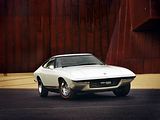
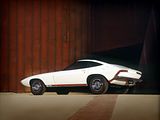
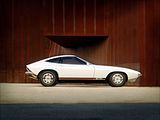


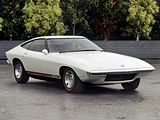
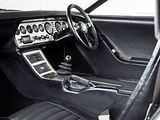
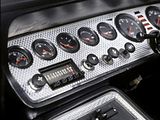
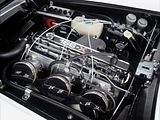
|






